Battle of the 2025 Chevrolet Blazer: Gas Versus Electric originally appeared on Autoblog.
Siblings by nameplate
We’ve seen a couple of automakers sharing nameplates across gas and electric vehicles now, with the Chevrolet Blazer and Blazer EV serving as a shining example. While sharing a nameplate helps in name recognition, it can also be confusing, especially if you’re not a car person. Both the Chevy Blazer and Blazer EV offer sharp styling, spacious seating, and an excellent driving range. In terms of performance and price, however, they couldn’t be more different.
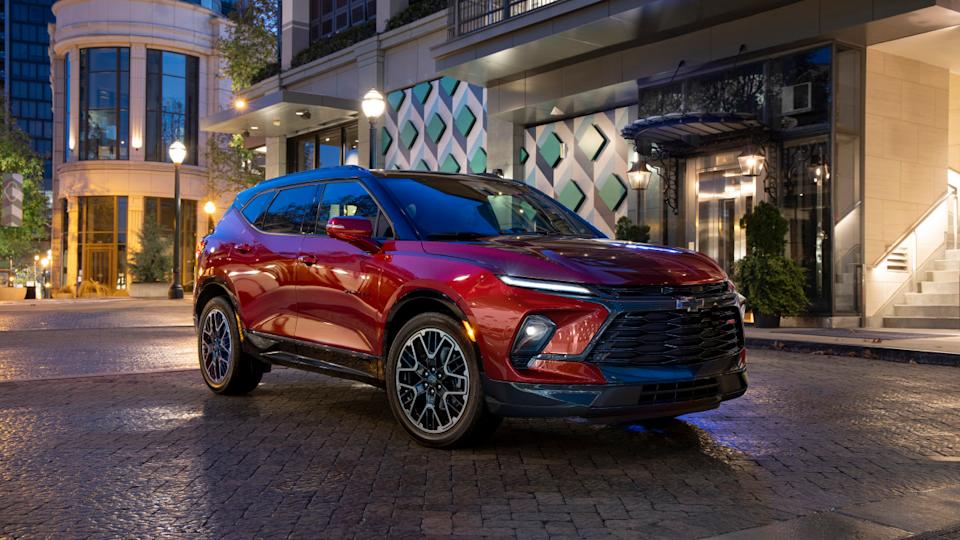
Combustion and electrification collide
The 2025 Chevrolet Blazer comes equipped with two engine options: a 2.0-liter turbocharged four-cylinder and a naturally aspirated 3.6-liter V6. Both engine options come paired with a nine-speed automatic transmission and front-wheel drive. All-wheel drive is available as an upgrade for another $2,700.
The turbocharged powertrain generates 228 horsepower and 258 lb-ft of torque. It’s the more efficient of the two engine options, earning up to 25 mpg in combined city/highway driving for an estimated 485-mile range. The naturally aspirated V6 engine is optional on most trim levels and produces 308 horsepower and 270 lb-ft of torque. Fuel efficiency takes a hit, though, with V6-equipped models earning up to 21 mpg in combined city/highway driving for an estimated 456-mile range.
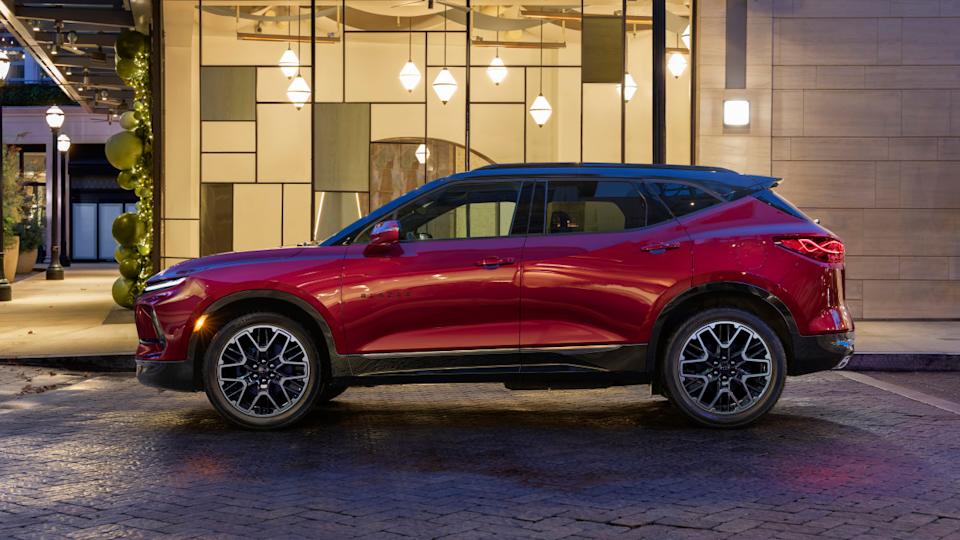
Thanks to the electric motor’s instant torque, every rendition of the Chevy Blazer EV is quick off the line. That’s where the simplicity ends, though. The entry-level LT is available with front- or all-wheel drive, while the RS comes in front-, rear-, or all-wheel drive configurations. The top-tier SS trim is only available with all-wheel drive.
Blazer EV LT and RS models with front-wheel drive feature a single electric motor that produces 220 horsepower and 243 lb-ft of torque, with a 312-mile range. RS models equipped with rear-wheel drive can travel up to 334 miles on a single charge while the electric motor generates 365 horsepower and 325 lb-ft of torque. LT and RS trims with all-wheel drive boast 300 horsepower and 355 lb-ft of torque, and can go as far as 283 miles.
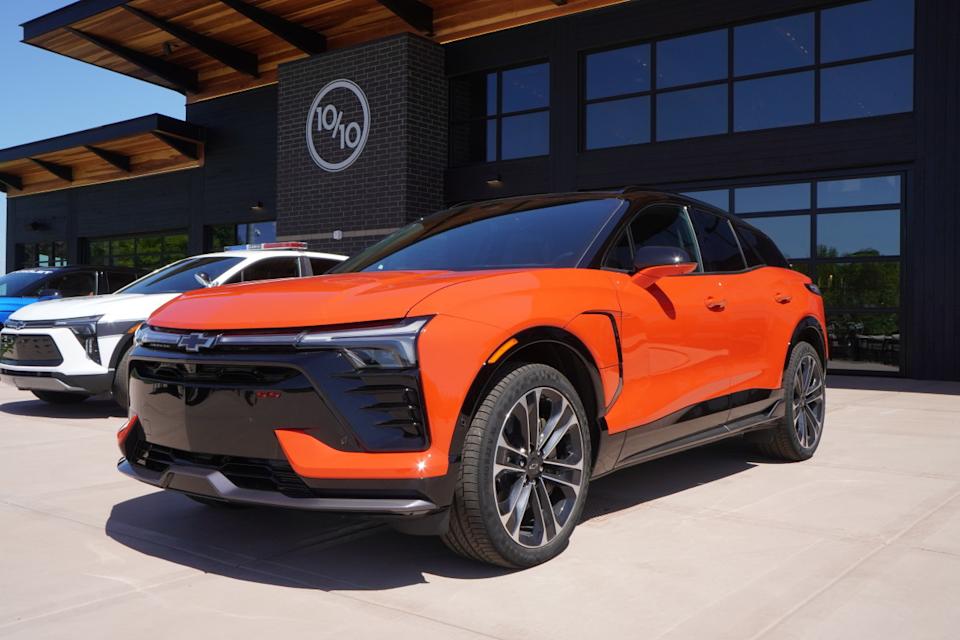
The SS trim features a performance version of the dual-motor AWD system tuned to produce up to 615 horsepower and 650 lb-ft of torque. Even with that kind of power, the SS model can go up to 303 miles on a single charge. According to GM estimates, the Blazer EV SS can go from zero to 60 mph in just 3.4 seconds.
Blazer’s shared nameplate extends to trim levels
When it comes to the initial price, the gas-powered Blazer is the better choice. Starting at $35,600, the Blazer 2LT comes with heated front seats, a 10.2-inch touchscreen display, and wireless Apple CarPlay and Android Auto compatibility. The 3LT, available from $39,500, builds on the entry-level trim with a power liftgate, heated side mirrors, and leather-appointed seats.
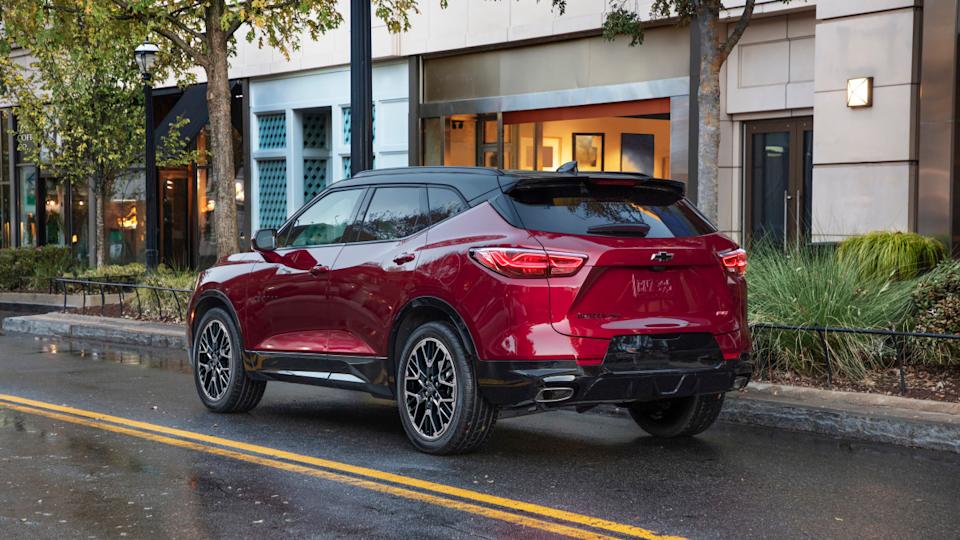
The RS and Premier trims top the range, and each comes priced from $43,000. Both models feature their own unique design elements and share several amenities. An eight-speaker Bose premium sound system, 10.2-inch touchscreen display, and Apple CarPlay and Android Auto compatibility come standard on both Blazer trims.
The RS trim features black exterior accents, including black bowties and roof rails. The dual exhaust highlights the model’s performance-driven aesthetic. Inside, the RS model includes black perforated leather-appointed seats with red accents. The Premier trim presents a more refined package, with a chrome horizontal grille, silver roof rails, and chrome accents.
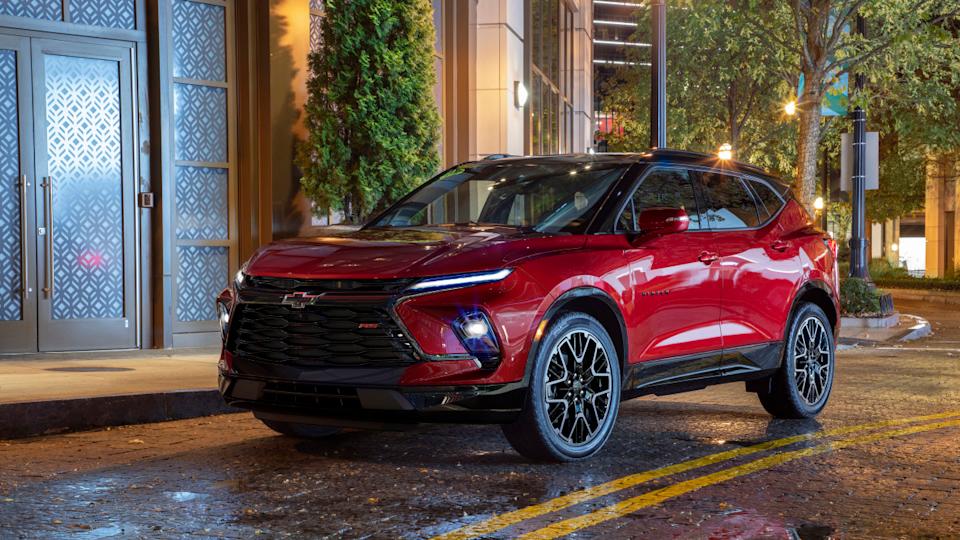
The electrified Blazer EV comes in three trim levels, all of which put an emphasis on technology and futuristic design elements. Starting at $44,600, the Blazer EV LT rides on 19-inch wheels accented by LED headlights and a body-color grille. Inside, the entry-level model features a 17.7-inch touchscreen and an 11-inch driver information display.
The RS trim builds on the LT, with black elements similar to those found on the gas-powered Blazer RS. 21-inch black wheels create an athletic aesthetic from the ground up, and an illuminated front light bar and bowtie add a futuristic look. Inside, the RS trim includes heated and ventilated front bucket seats wrapped in perforated suede and Evotex upholstery. The mid-tier Blazer EV RS starts at $49,900.
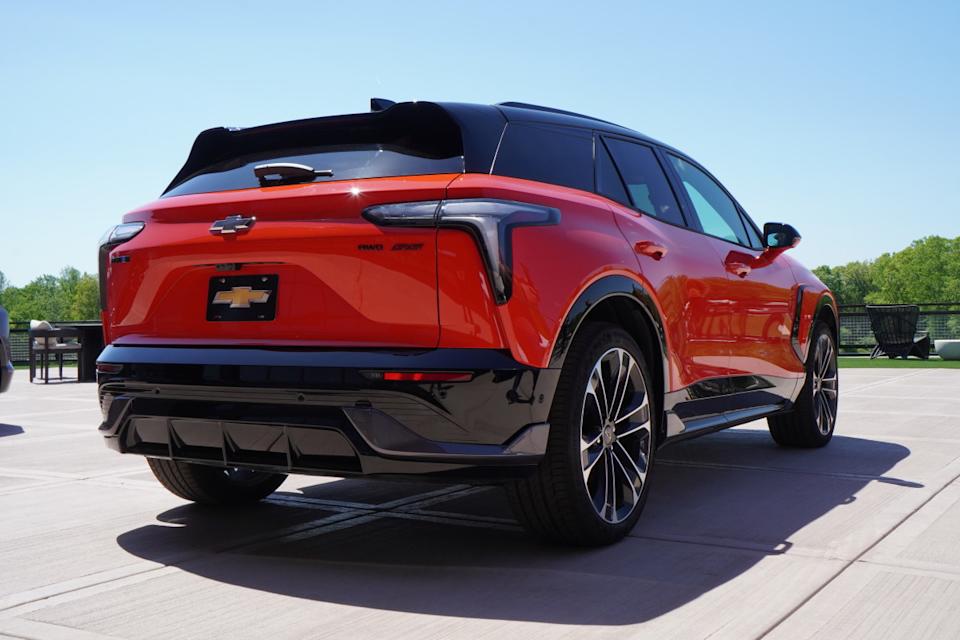
The top-spec SS trim starts at $60,600 and brings the sport-inspired styling that the moniker is known for. Aggressive design elements, including a standard black roof and functional aerodynamic enhancements, make the Blazer EV SS stand out from the rest of the range. An informational G-force screen plays into the performance model’s aesthetic, and Z-Mode allows the driver to customize aspects of the Blazer EV’s driving, including steering and throttle, for a more engaged experience.
Final thoughts
The 2025 Chevrolet Blazer and Blazer EV may share a nameplate, but they’re far from being identical models. Despite sharing a badge, these crossovers differ in powertrain, technology, and styling. If price is the primary concern, the gas-powered Blazer is the clear pick, while the electrified model is the better option for long-term fuel savings. Even so, if you're in need of a family crossover, the Blazer and Blazer EV are solid choices in their respective segments.
Battle of the 2025 Chevrolet Blazer: Gas Versus Electric first appeared on Autoblog on Aug 2, 2025
This story was originally reported by Autoblog on Aug 2, 2025, where it first appeared.


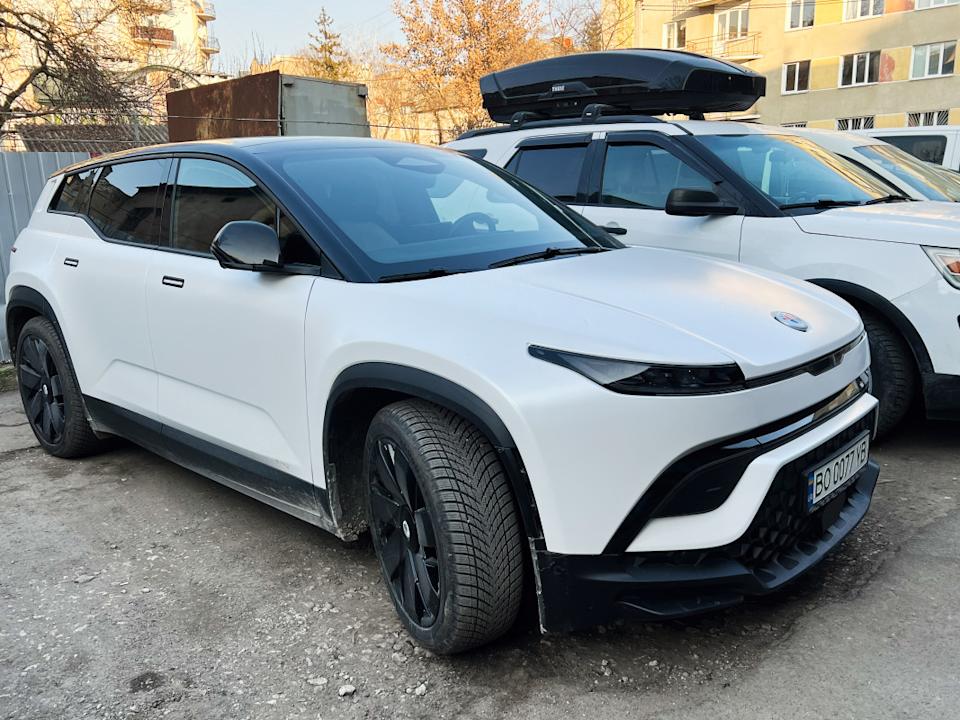


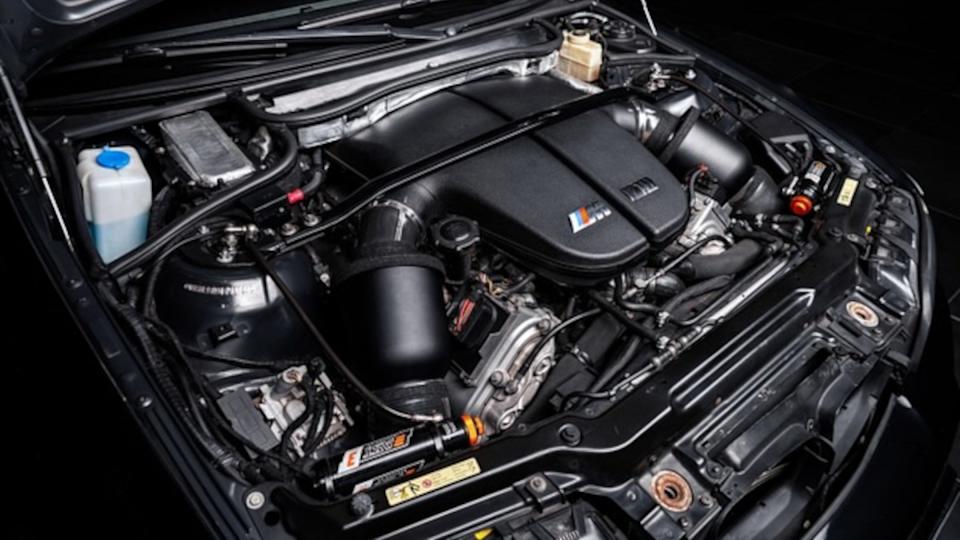
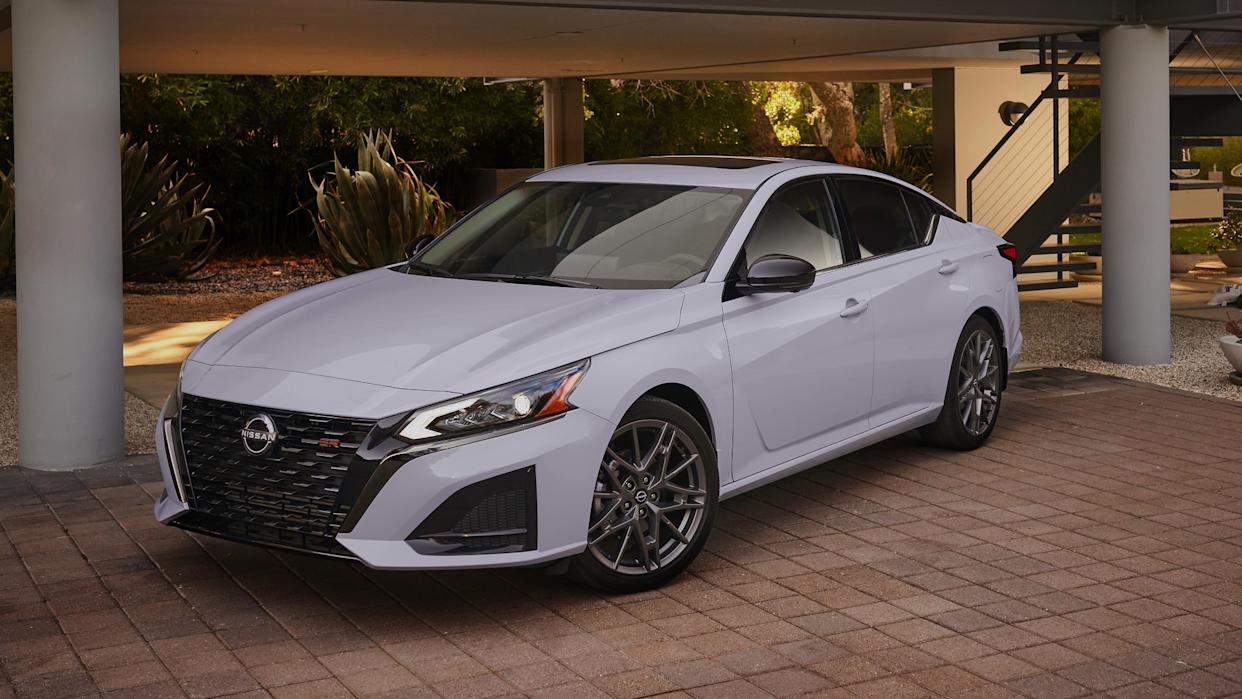
Comments